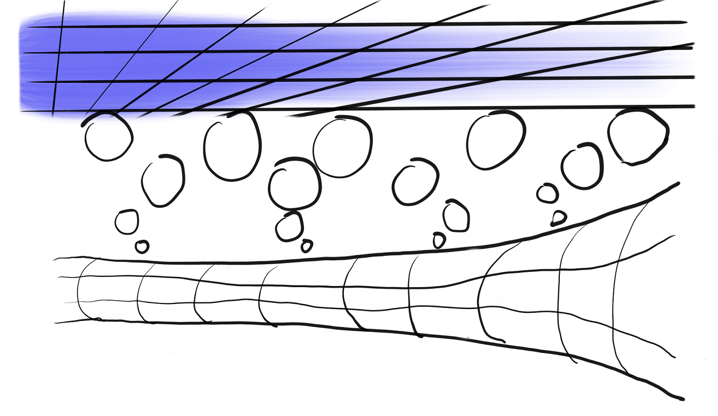

Far from equilibrium systems display a plethora of interesting and new phenomena which are relevant for a diverse collection of research areas from ultra-cold gases to heavy ion collisions and quenched systems in material science and which can be directly tested in table-top experiments. Can fluids driven far from equilibrium display any degree of universality?
Recent findings by researchers from the Institute of Theoretical Physics (ITP) of the Chinese Academy of Sciences (CAS) and Shanghai Jiao Tong University (SJTU) have found that the answer might be “yes”. The study was published in PRL on the 27th of July (PhysRevLett.129.011602).
The dynamics of fluids near equilibrium can be well described by hydrodynamics whose history goes back more than 2000 years with the work On Floating Bodies by Archimedes. More recently, scientists discovered that strongly coupled fluids display very universal properties, the most famous of which is a universal minimum in the ratio between their shear viscosity and their entropy density given in terms of a few fundamental constants such as the speed of light and the Planck constant and known as the Kovtun-Son-Starinets (KSS) bound. Interestingly, this bound has been formally derived using the holographic duality, a powerful theoretical framework that is able to map commonly intractable problems, such as the shear dynamics of strongly coupled fluids, to simpler problems related to the dynamics of certain gravitational black holes.
Using precise numerical simulations for the time dependent dynamics of higher dimensional black holes driven far from equilibrium by external shear deformations, this recent work suggests that this universality could survive even far away from equilibrium, providing another case in favor of “the unreasonable effectiveness” of hydrodynamics beyond its naïve regime of applicability. The results of this study show that the viscosity-entropy ratio of strongly coupled fluids attains a constant value even when the system is driven far away from equilibrium by a time dependent external source. This outcome is completely independent of the form of the driving and holds even in the absence of conformal symmetry. Moreover, whenever the shear rate is small compared to the characteristic energy scale, this late time value corresponds exactly with that given by near-equilibrium hydrodynamics, suggesting the existence of an out-of-equilibrium attractor. On the contrary, when the late time state is kept far from equilibrium by a large shear rate (in energy units), this constant value can be parametrically smaller than the aforementioned near-equilibrium KSS value and novel phenomena appear.
This research indicates the existence of universal mechanisms in the out-of-equilibrium behavior of strongly coupled fluids which might have important consequences on the dynamics of several systems such as quark-gluon plasma and complex fluids in general and which can be potentially tested in the lab in the near future.
Here is the link to the paper: https://journals.aps.org/prl/abstract/10.1103/PhysRevLett.129.011602




